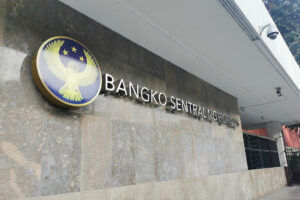Merz claims win for German conservatives as far right surges to strongest postwar election result
End-September net external liability position widens


THE Philippines’ net external liability position widened at the end of September due to a decline in the central bank’s reserve assets, the Bangko Sentral ng Pilipinas (BSP) said late Friday.
Preliminary data released by the BSP indicated that the international investment position (IIP) was a net external liability of $50 billion at the end of September, as against a net liability of $49.6 billion at the end of June.
Year on year, the IIP was 62.1% wider against the net external liability of $30 billion a year earlier.
“This development was driven mainly by the 1% contraction in external financial assets, offsetting the 0.7% decline in external financial liabilities,” the BSP said in a statement.
The IIP is an indicator of the value and composition of a country’s financial assets and liabilities. It gauges an economy’s external exposure in financial assets and liabilities.
The central bank reported that external financial assets fell 1% to $227.9 billion at the end of September against $230.3 billion at the end of the previous quarter.
The BSP attributed the decline in financial assets to the combined decreases in reserve assets ($98.1 billion as of September from $99.4 billion as of June), portfolio investments ($32.5 billion from $33.5 billion), and other investments ($26.9 billion from $27.5 billion).
“The lower level of reserves was attributed to the National Government’s payments of its foreign currency debt obligations, coupled with the downward adjustments in the valuation of the BSP’s foreign currency-denominated reserves (or non-gold reserves) and gold holdings,” the BSP said.
“In addition, the residents’ net withdrawal of their investments in foreign debt securities, and net repayment of loans by nonresidents to the local banks also contributed to the lower total outstanding level of external financial assets during the review period,” it added.
Some 43% of the external financial assets are reserve assets held by the BSP. Other sectors held $92.6 billion (40.6%) during the same period, while banks kept $32.9 billion (14.4%).
Meanwhile, external financial liabilities fell 0.7% to $277.9 billion at the end of September compared with the end of June.
Residents’ outstanding foreign portfolio investments stood at $80.7 billion at the end of September, 5.2% lower from the previous quarter.
“This development emanated mainly from the decline in nonresidents’ net investments in equity securities (by 6.2%) and debt securities (by 4.5%) amid global slowdown and high interest rate environment, which weighed down on investment activity, coupled with downward valuation adjustments during the period,” the BSP said.
“This decline, however, was muted partly by the 3.8% growth in residents’ outstanding foreign loans to $67.2 billion from $64.7 billion,” the central bank added.
The BSP has hiked benchmark interest rates by 450 basis points from May 2022 to October 2023 to fight inflation. This has brought the key policy rate to 6.5%, the highest in 16 years.
Other sectors accounted for 60.9% or $169.3 billion of the country’s total external financial liabilities at the end of September. The rest were held by the National Government and banks, with financial liabilities worth $70.4 billion (25.3%) and $34.5 billion (12.4%), respectively.
The BSP held 1.4% of all external financial liabilities at $3.8 billion, which were mostly in the form of Special Drawing Rights. — Keisha B. Ta-asan











